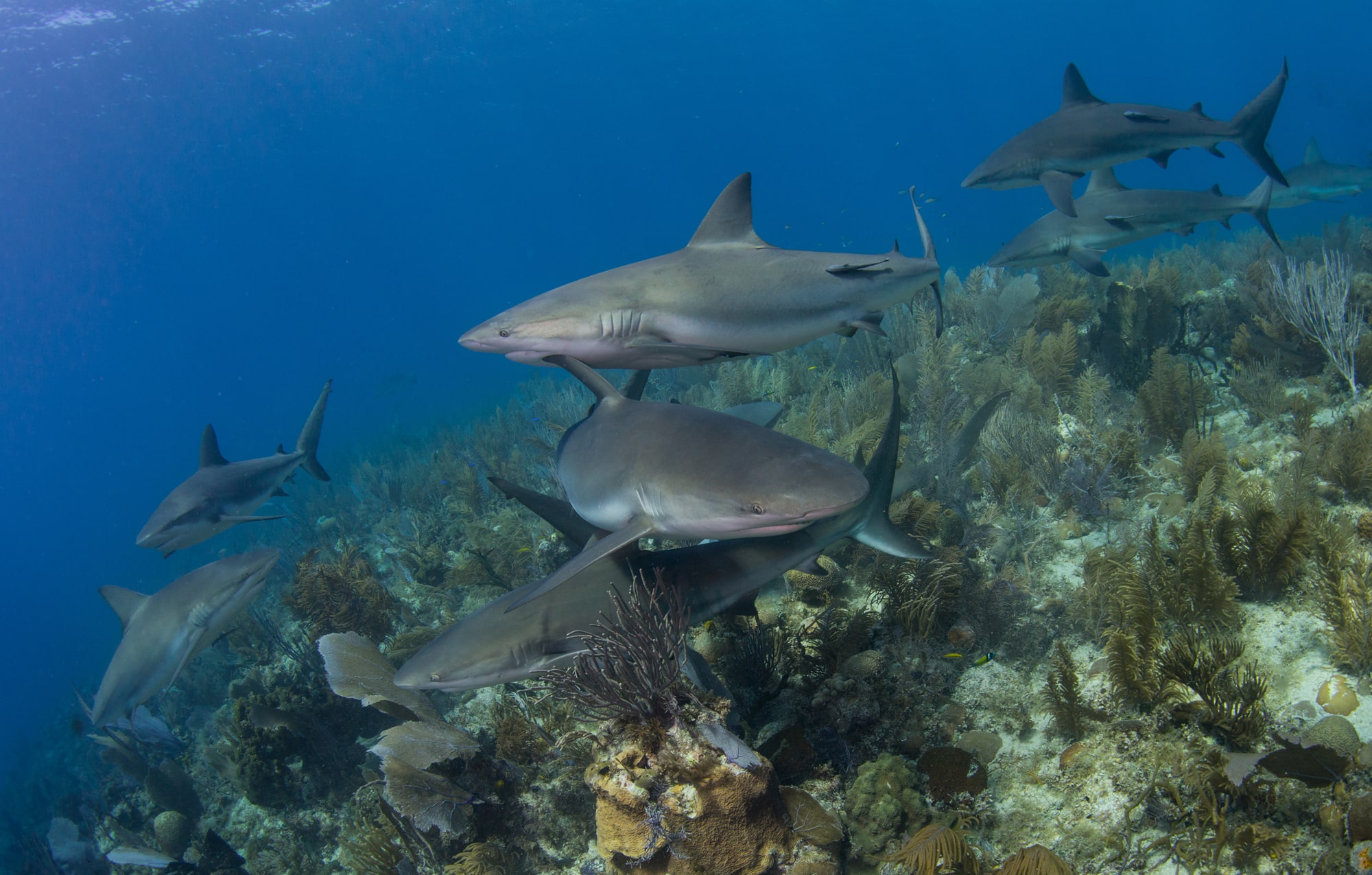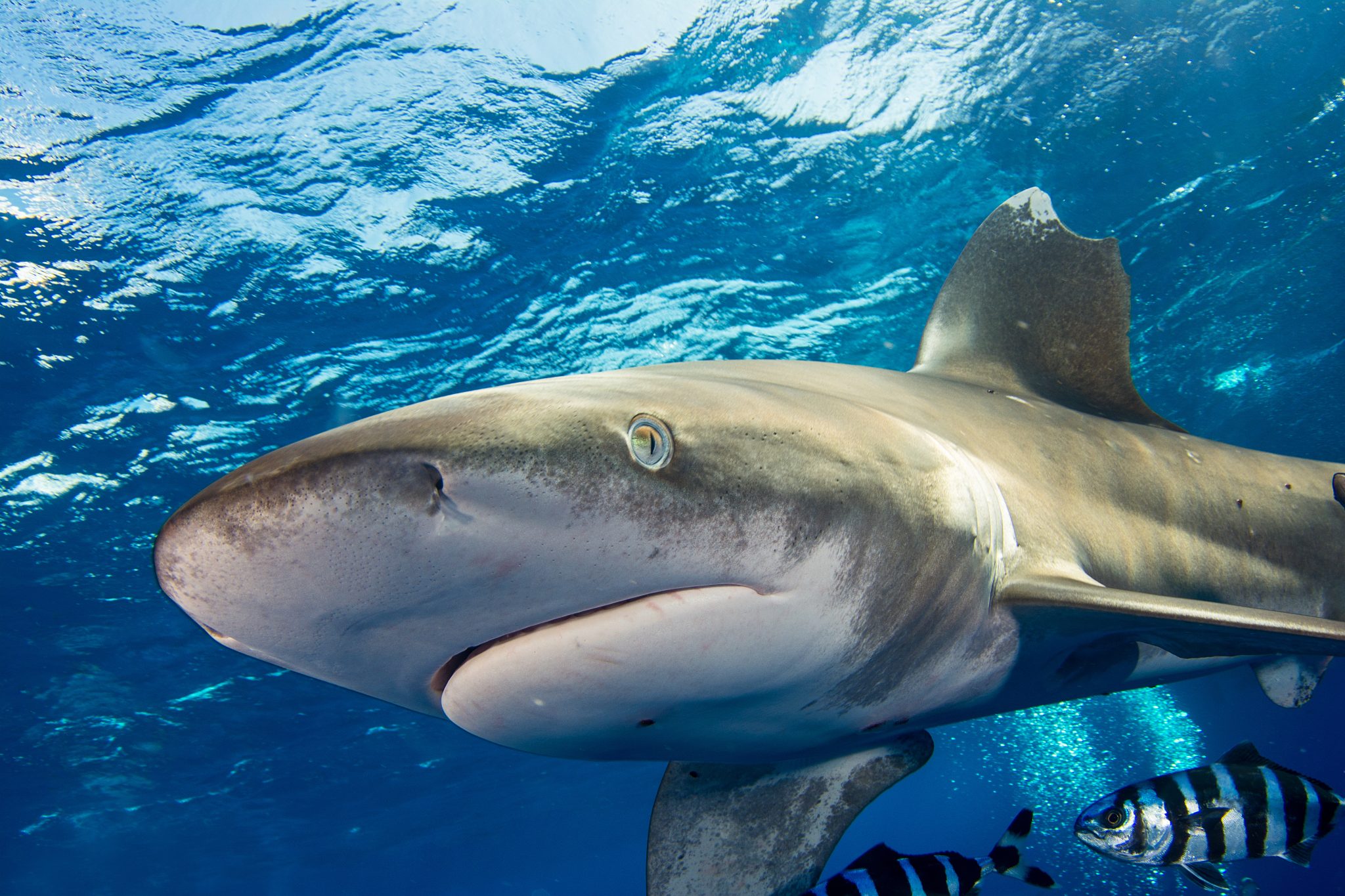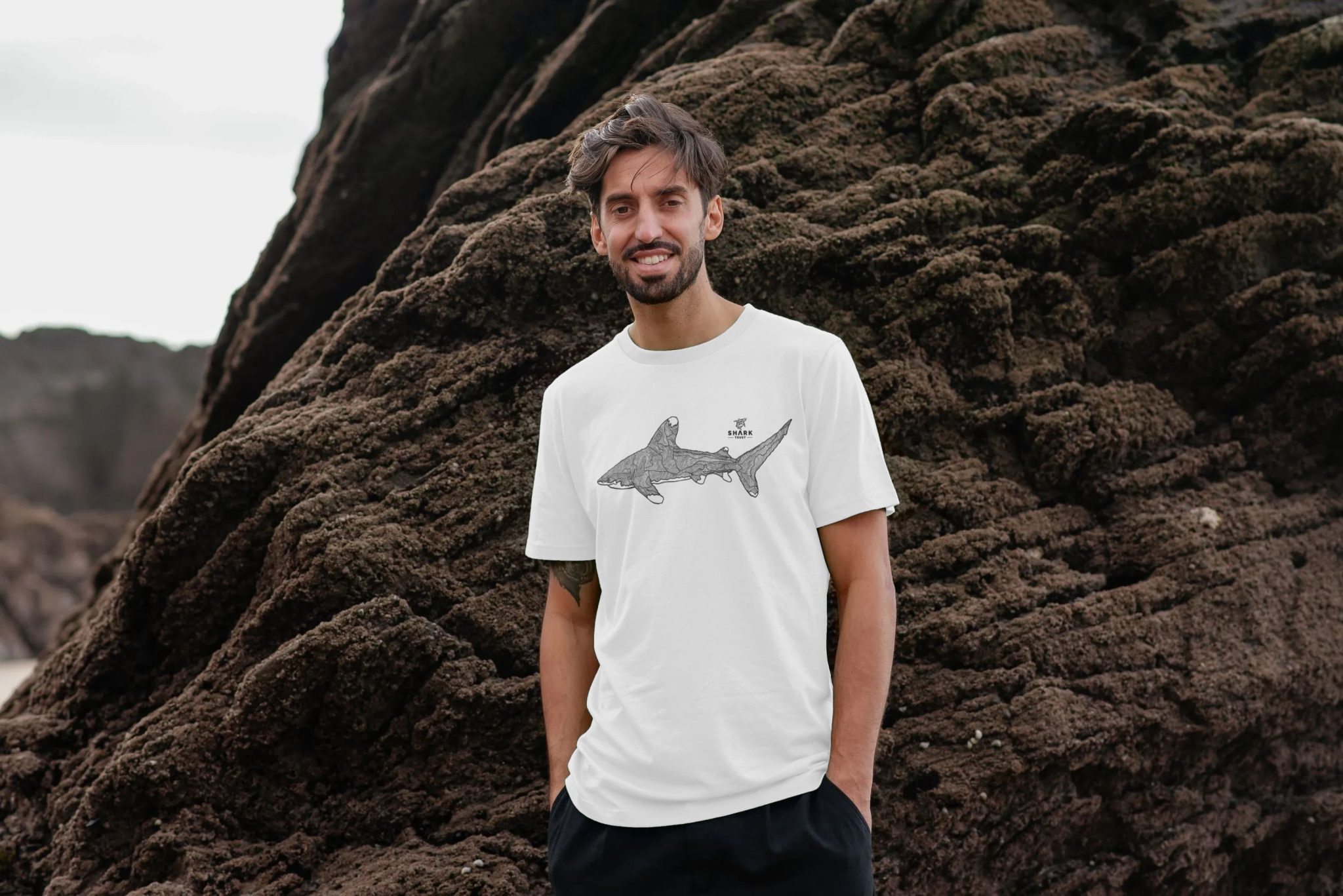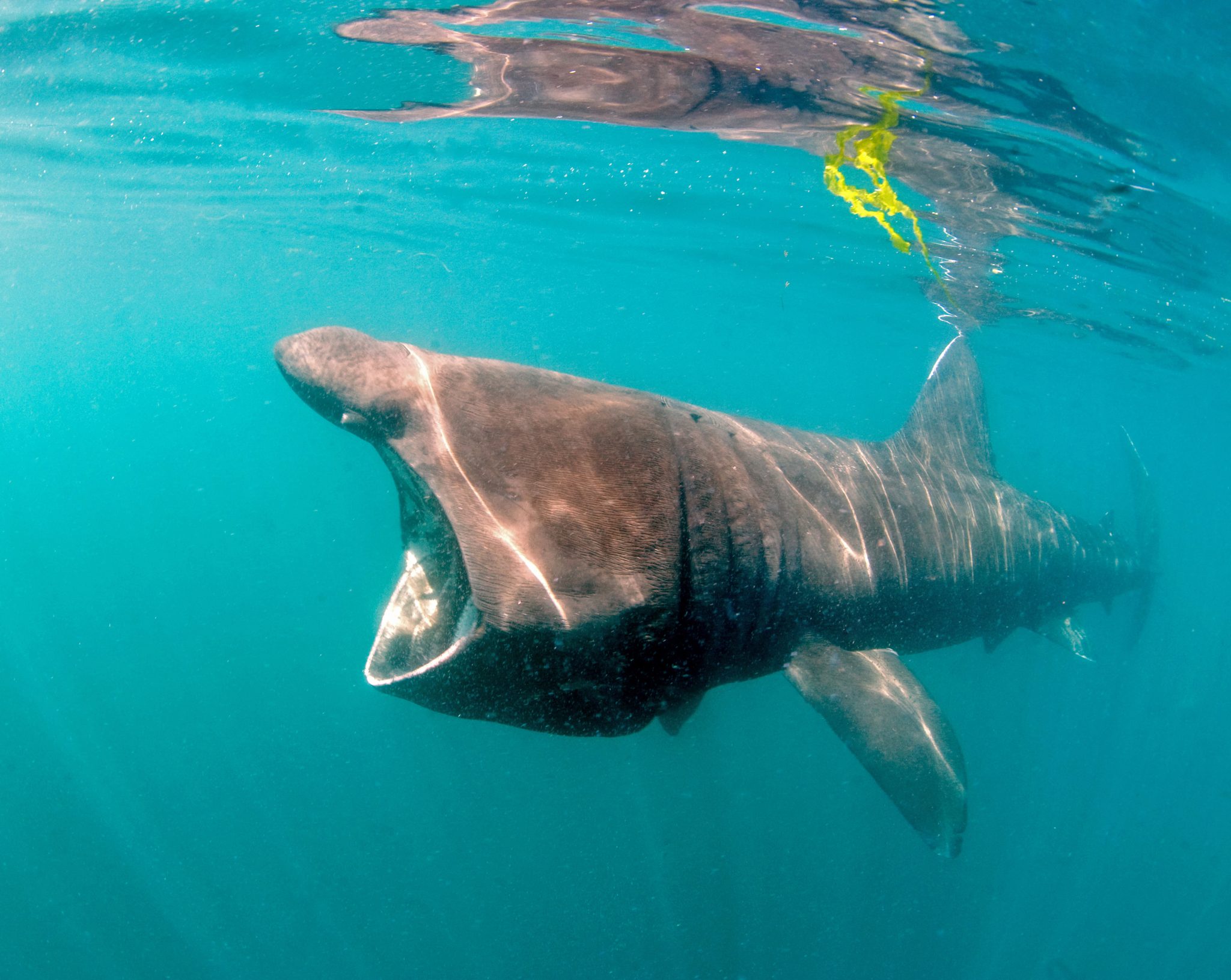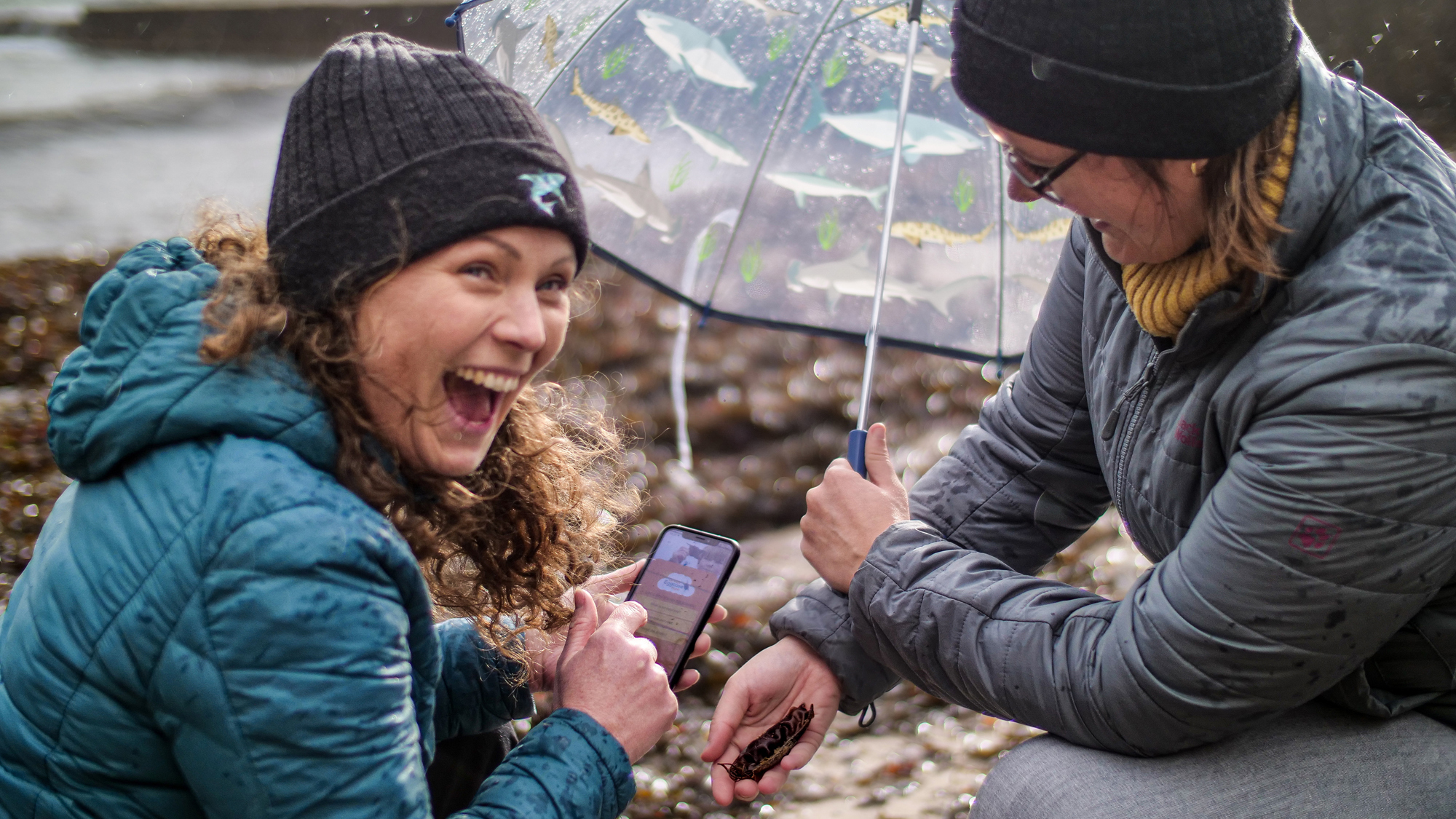Marine Life & Conservation
Shark Week – Fiji: Shark Diving in murky waters (Watch Video)
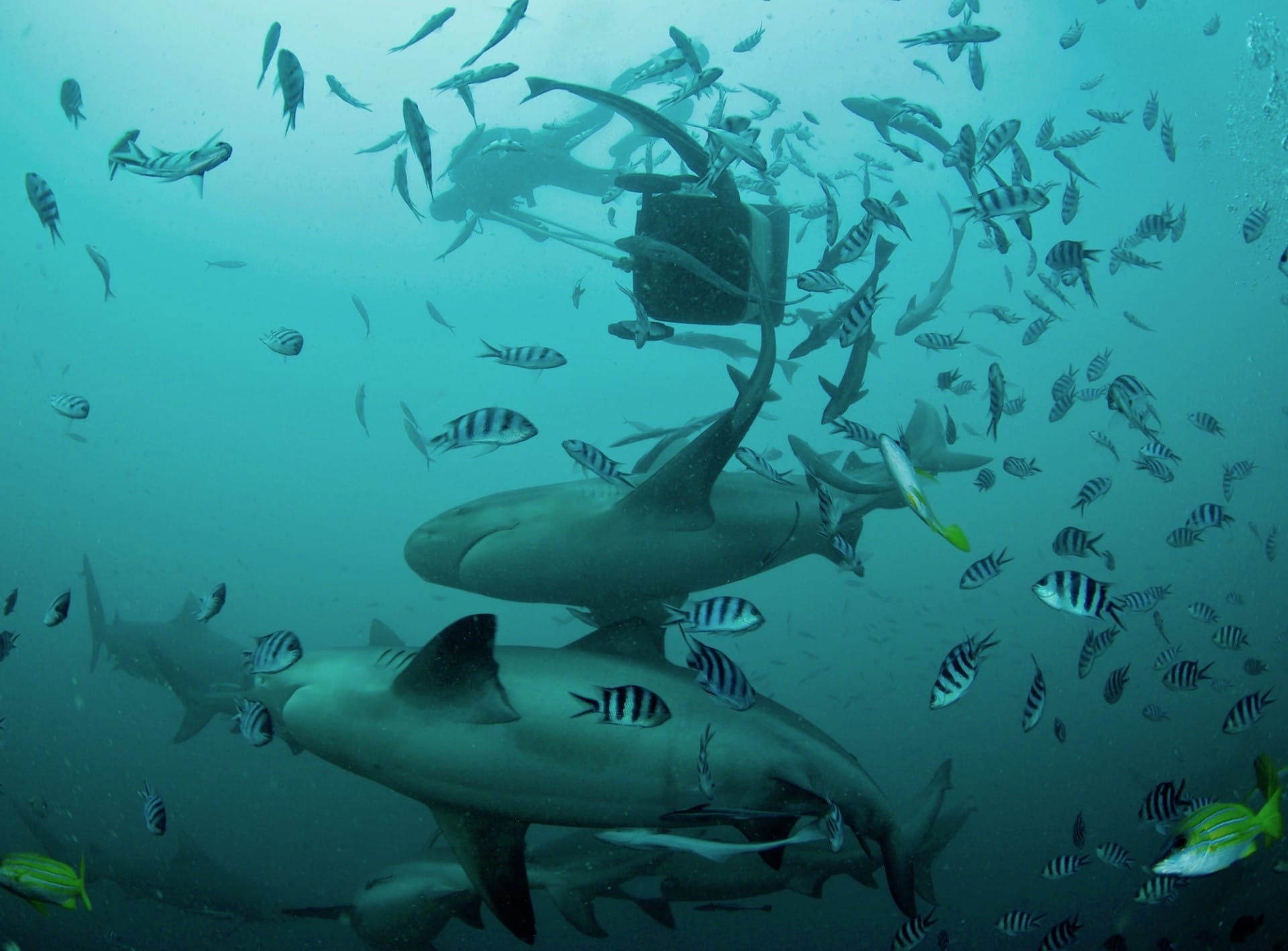
For Shark Week, Scubaverse bloggers CJ and Mike share this great video and their experiences of diving with Bull sharks and more in Fiji…
Murky waters are not what usually come to mind when thinking about diving in Fiji. Unfortunately, we had timed our visit straight after the typhoon in mid-April. Having reached Viti Levu after several days delay, it was only to find that conditions were still too bad on the south coast to do any diving for a couple of days; so we contented ourselves to enjoy the beautiful island and the locals’ fantastic hospitality.
One of the dives we were most looking forward to was the famous Beqa Lagoon shark dive at the Shark Reef Marine Reserve. Being very keen on shark conservation I was interested to see how this operation worked, how it involved local people in the marine reserve and how the proceeds from tourism helped with maintaining a protected area for sharks. Luckily for us the weather settled down after a few days and we were able to book in for a shark dive!
We chose to go with Beqa Adventure Divers and booked to do two shark dives in the morning and an afternoon soft coral dive. We were greeted on arrival by a friendly and efficient front desk team and completed all the necessary paperwork. We then went through to the gear rental and equipment set-up area to get ready to dive. Here we had our only negative experience of the trip, bumping into an extremely rude man, who turned out to be one of the owners! Thankfully our interaction was a brief one and as the rest of the staff possessed the manners and professionalism sadly lacking in their boss, we moved on and did not allow this incident to ruin our whole day.
Once kitted up, our equipment was loaded onto the boat and we met our crew. The boat briefing was very good and the dive briefing thorough, with clear and precise instructions given as to where to go, when, who to follow and how to behave. The divemaster gave us strict instructions on keeping all limbs and cameras to yourself and behind the purpose built walls. The dive plan was well thought out and explained, with the aid of a dive site map. At the site we were told the visibility was likely to be lower than pictures we may have seen and to stay close to the divemaster assigned to you. We were also given a quick shark ID summary and requested to count the sharks we saw by our boat’s marine biologist. With growing excitement we kitted up and jumped in!
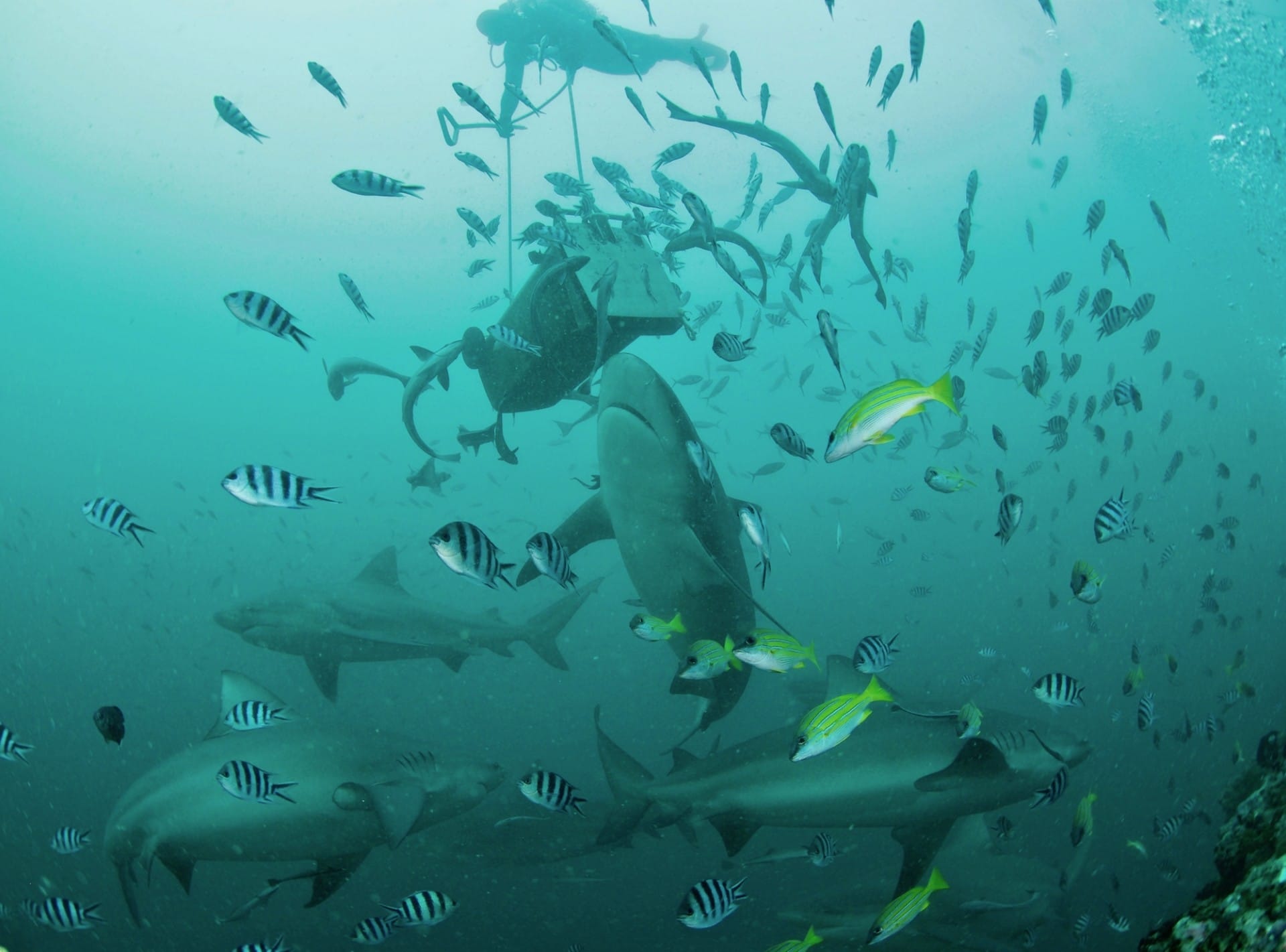
Once in the water we descended with our DM and took up position in front of ‘The Arena’, behind a wall built of coral rubble at 30m. Once all the divers were positioned with DMs at either end and at various points behind us with big poles, the feed began! Another DM swam above us with a wheelie bin full of tuna heads, controlling the position and timing of the dropped food so that as the Bull sharks came in they would chomp up the fish just in front and above our heads, giving a magnificent view of these huge sharks in feeding mode. For 15 minutes huge Bull sharks swam all around us, feeding and cruising past, eyeballing the group. The experience was made all the more atmospheric by the low visibility – dark shadows emerging into oncoming sharks in what felt like the last few metres!
After 15mins at depth we moved up to the next level, 10m for an another 15 minutes, to view Grey, Whitetip and Blacktip Reef sharks, which were fed fish from a smaller container by a DM. The final part of the dive was really an extended safety stop at 5m, with around 10mins to enjoy the reef sharks and abundant fish life at the top of the reef before surfacing.
With everyone buzzing about the dive we were served hot drinks and cookies on the boat, while the marine biologist took data from us, about what sharks we had seen and how many we estimated there were of each species. Apparently today was a quiet day with ‘only’ 20+ Bull sharks (they can get up to 70+ on a busy day!). He then gave us a talk on the shark species we had seen, their behaviours, and some great information about the formation of the marine reserve and their continuing projects and data collection.
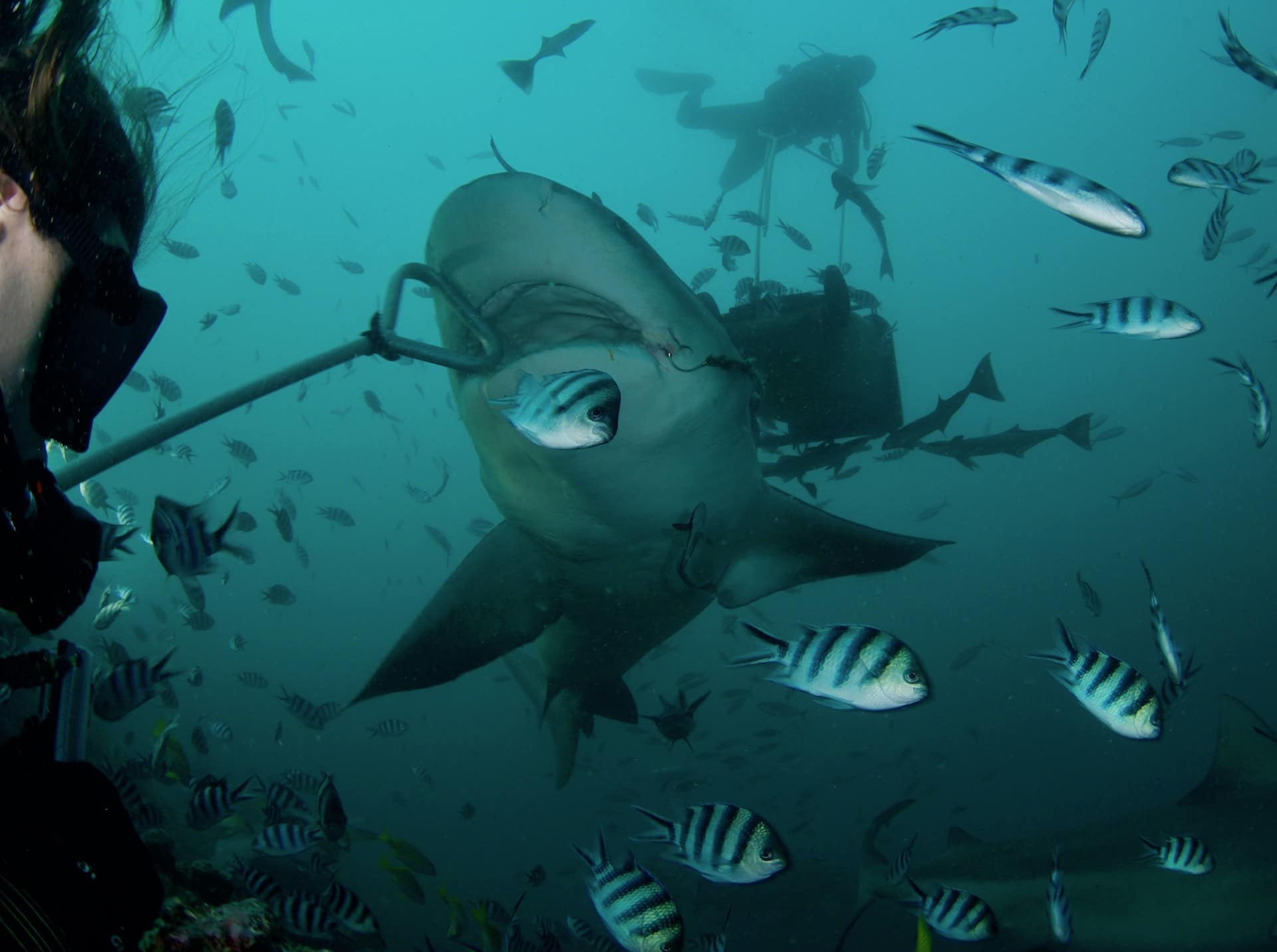
After a lengthy surface interval to off-gas, we headed back in at ‘The Take Out’ to do a 15m dive for 30mins and 5m for 10mins. Here we lay on slabs of rock behind a small wall and had some even closer Bull shark action. The DM behind me occasionally had to bop a shark on the snout if it continued towards us a bit too close, but the sharks seemed very used to the routine and interested only in having a snack of tuna head. The visibility was worse on this dive, adding to the drama, but also making we wish we could experience it again in clear water. After half an hour, which seemed like only minutes with all the stunning sharky action, we headed up to safety stop depth and once again enjoyed the Reef shark feeding.
I didn’t know how I would feel about the shark dive going in, but was prepared to give it a go and I knew I would love seeing sharks in close proximity. Having done the two dive morning, I am very impressed with the set up at B.A.D. Safety wise it is excellent as the very structured dive plan contributes to the high level of control the staff have at all times. The feeding was organised to allow everyone to get a good view and close up action with the sharks, and the high ratio of DMs to divers means the staff have total control of the group and the ability to turn away any shark that gets a little too curious without any drama. Having a multi-level dive also allows divers to see several different species of shark on one dive and extend the dive time.
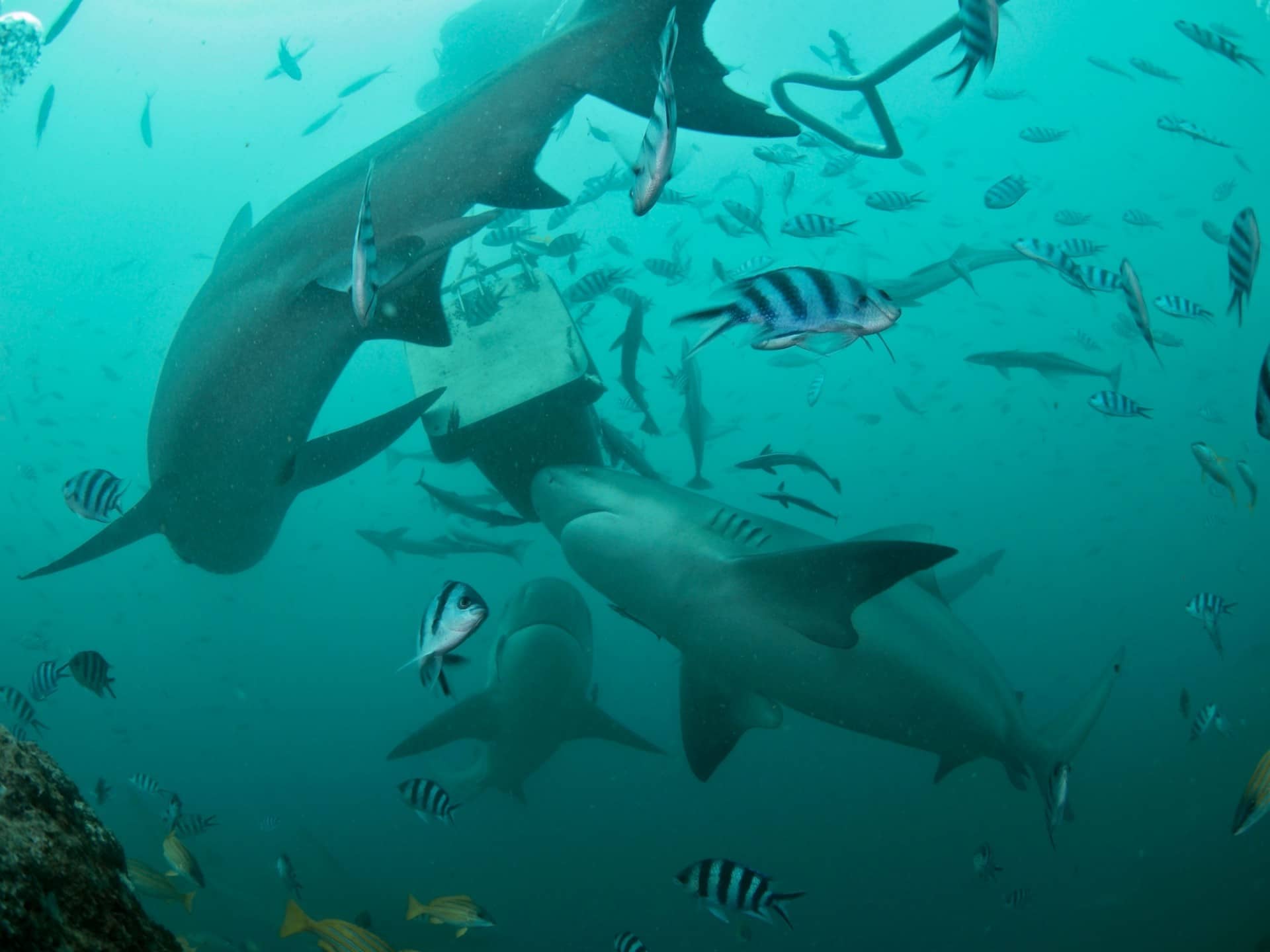
The staff on the boats and in the water were all locals, all of whom were knowledgable, professional and exuded a calm on a boat full of very excited tourists. I was really impressed that they had a marine biologist on each boat to provide info, take data and answer questions. Also we were told that a portion of the money from tourism goes to local communities that have given up their fishing rights in order to create and maintain the marine reserve, which is great news and a good conservation strategy.
Sadly as the weather was worsening and the vis deteriorating, the afternoon dive was called off and so we packed our things and headed off for a good lunch, all that excitement certainly works up an appetite!
On the whole, we had a really good experience with the Fiji Shark Dive in Beqa Lagoon and would recommend it to anyone who wants to see Bull sharks up close. However if you want to do lots of diving and see some of Fiji’s other world class dive sites in all their glory, I would recommend paying high season rates and travelling to Fiji outside of the typhoon season!
Marine Life & Conservation
Leading UK-based shark conservation charity, the Shark Trust, is delighted to announce tour operator Diverse Travel as a Corporate Patron
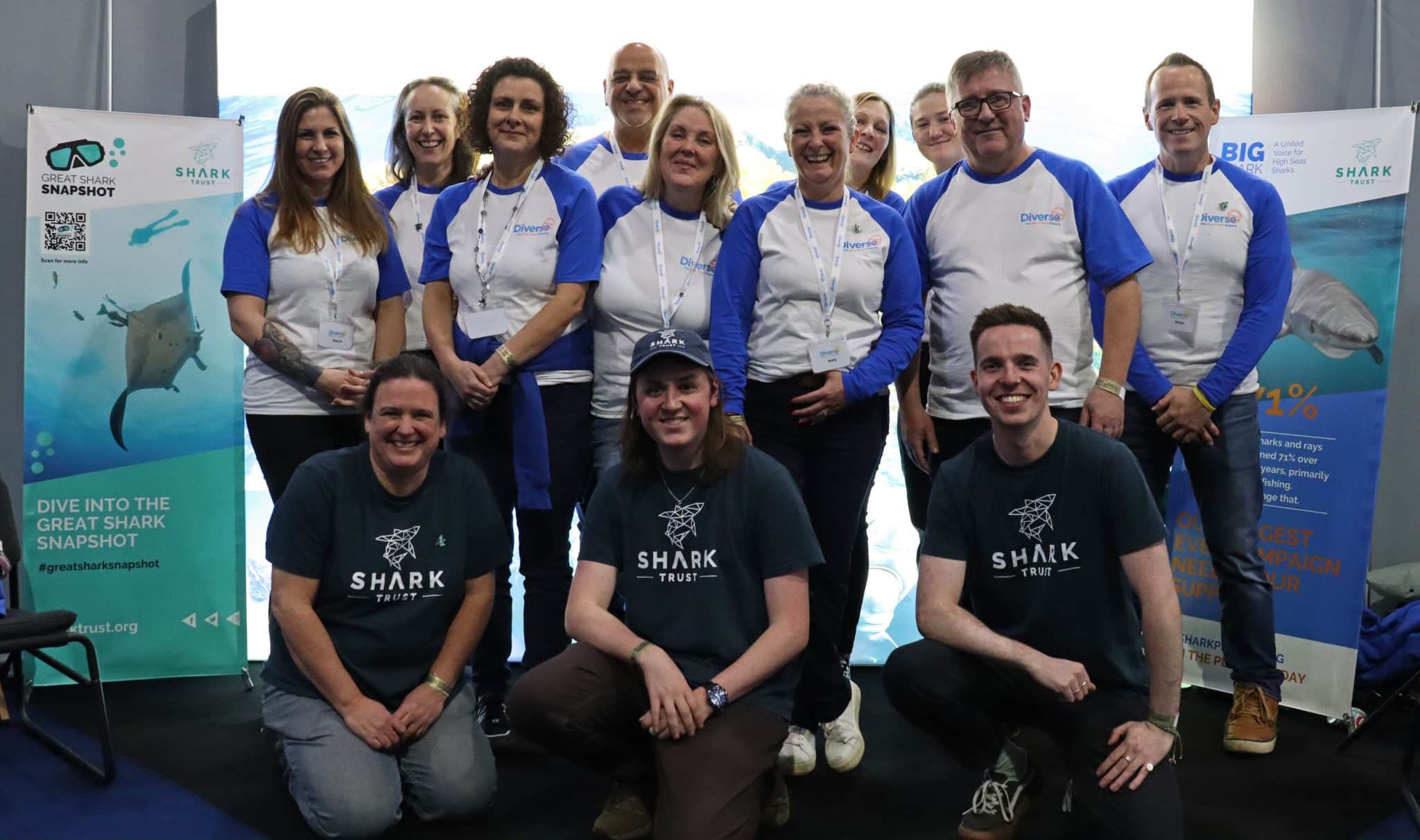
 Corporate Patrons provide a valuable boost to the work of The Shark Trust. The Trust team works globally to safeguard the future of sharks, and their close cousins, the skates and rays, engaging with a global network of scientists, policymakers, conservation professionals, businesses and supporters to further shark conservation.
Corporate Patrons provide a valuable boost to the work of The Shark Trust. The Trust team works globally to safeguard the future of sharks, and their close cousins, the skates and rays, engaging with a global network of scientists, policymakers, conservation professionals, businesses and supporters to further shark conservation.
Specialist tour operator Diverse Travel has operated since 2014 and is committed to offering its guests high quality, sustainable scuba diving holidays worldwide. Working together with the Shark Trust will enable both organisations to widen engagement and encourage divers and snorkellers to actively get involved in shark conservation.
“Sharks are truly at the heart of every diver and at Diverse Travel, we absolutely share that passion. There is nothing like seeing a shark in the wild – it’s a moment that stays with you forever!” says Holly Bredin, Sales & Marketing Manager, Diverse Travel.
“We’re delighted to celebrate our 10th year of business by becoming a Corporate Patron of the Shark Trust. This is an exciting partnership for Diverse and our guests. We will be donating on behalf of every person who books a holiday with us to contribute towards their vital shark conservation initiatives around the world. We will also be working together with the Trust to inspire divers, snorkellers and other travellers to take an active role – at home and abroad – in citizen science projects and other activities.”
Paul Cox, CEO of The Shark Trust, said:
“It’s an exciting partnership and we’re thrilled to be working with Diverse Travel to enable more divers and travellers to get involved with sharks and shark conservation. Sharks face considerable conservation challenges but, through collaboration and collective action, we can secure a brighter future for sharks and their ocean home. This new partnership takes us one more valuable step towards that goal.”
For more information about the Shark Trust visit their website here.
For more about Diverse Travel click here.
Marine Life & Conservation
Shark Trust Asks Divers to help with Shark Sightings this Global Citizen Science Month
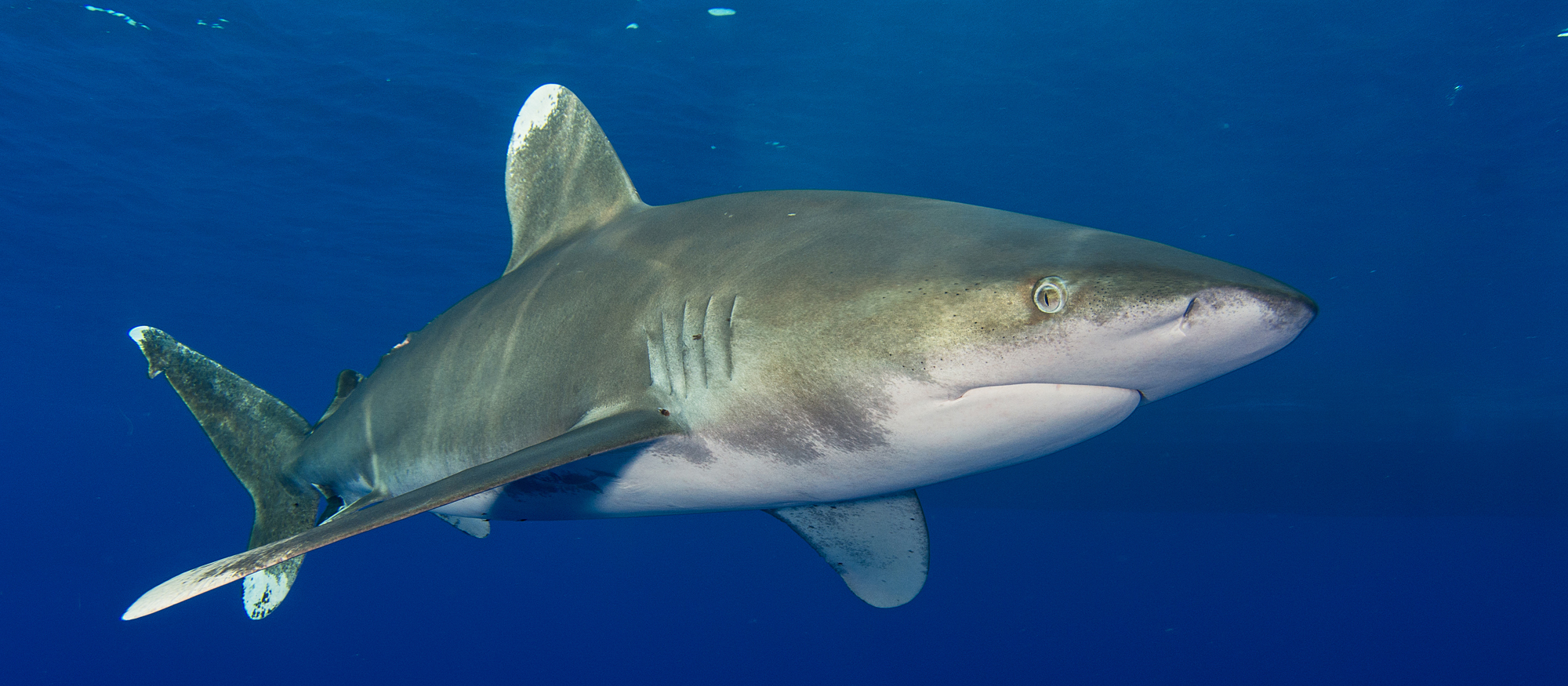
 Whether you are stuck for ideas of what to do with the kids or are off on the dive trip of your dreams. You can get involved in Citizen Science Month and help the Shark Trust by providing vital data about sharks are rays both close to home and further afield.
Whether you are stuck for ideas of what to do with the kids or are off on the dive trip of your dreams. You can get involved in Citizen Science Month and help the Shark Trust by providing vital data about sharks are rays both close to home and further afield.
In addition to reporting the sharks and rays you see on your dives, the eggcases you find on the beach, the Shark Trust is looking for some specific data from divers who are asked to report any Oceanic Whitetip and Basking Sharks.
Oceanic Whitetip Sharks
The Shark Trust are looking specifically for Oceanic Whitetip Shark sightings over the coming weeks and months. So, if you are diving anywhere in the world, please report your sightings via the website or app.
Website: https://recording.sharktrust.org/
App: Search The Shark Trust in your app store
The Oceanic Whitetip. Known for their incredibly long dorsal and pectoral fins, this species was once the most abundant oceanic-pelagic species of shark on the planet.
Large and stocky, they are grey or brown above, and white below and famous for their huge rounded first dorsal fin and paddle-like pectoral fins. The fins also highly prized within the shark fin trade. Whilst they are mostly solitary, Oceanic Whitetips do occasionally hunt in groups.
An inquisitive species, they were easy prey for fisheries. Combined with their low reproductive rate, they were inevitably at high risk of population depletion. And declines of up to 99% have been reported in certain sea areas. They are listed as Critically Endangered on the IUCN Redlist (2019).
Conservation efforts to discourage further declines include listing on CITES Appendix II and CMS Appendix I. They’re also the only species prohibited from take by all the Tuna RFMOs (Regional Fisheries Management Organisations). However, these measures do not mean that Oceanic Whitetips are not still caught – whether targeted or as bycatch – in some parts of the world. With populations declining at such a high rate, effective implementation of management measures is essential to ensure that the species can recover.
If you are lucky enough to get an image of an Oceanic Whitetip and you record your sighting on the Shark Trust app or website YOU CAN WIN! All images submitted with sightings, that also give consent to use in conservation messaging, will be in with a chance to win an Oceanic Whitetip T-shirt and mug. The competition will run until the end of “Shark Month” in July – so keep those sightings (and images) coming in.
Basking Sharks
Basking Shark (Cetorhinus maximus) season is upon us, and the Shark Trust is asking everyone to keep an eye out for these majestic giants over the summer months. If you see any, you can record your sighting to the Basking Shark Sightings database.
Each year, these mighty fish return to British waters to feed on plankton. You may see one, (or a few if you’re really lucky) from around April-October. They can be seen feeding at the surface of the water, where they look like they’re basking in the sun. Thus, their name!
Sighting hotspots around the British Isles include southwest England, Isle of Man, north coast of Ireland, and western Scotland. The Sea of the Hebrides is the most prolific sightings area in Scotland, but they have been spotted all around the coast and have even ventured into some of the sea lochs. The Shark Trust has received thousands of sightings since the Basking Shark project began, but more data is needed to truly understand what is going on with population numbers and distribution. You can help by recording your sightings this summer.
Great Eggcase Hunt
The Shark Trust has an Easter Egg Hunt with a difference for you to try. Take part in the Great Eggcase Hunt and get involved with a big citizen science project that helps shark, ray and skate conservation. And it’s an enjoyable activity for all the family.
The Shark Trust also want snorkellers and divers to record their underwater eggcase findings. Underwater records help pinpoint exactly where sharks and skates are laying their eggs and can help link to beach records. Learning the depth and substrate that they lay on also helps better understand the species.
Find out more: https://www.sharktrust.org/great-eggcase-hunt
Whether you are diving, snorkelling or exploring on the beach you can take part in Citizen Science Month and get actively involved in shark and ray conservation. Find out more: www.sharktrust.org
-

 News3 months ago
News3 months agoHone your underwater photography skills with Alphamarine Photography at Red Sea Diving Safari in March
-

 News2 months ago
News2 months agoCapturing Critters in Lembeh Underwater Photography Workshop 2024: Event Roundup
-

 Marine Life & Conservation Blogs2 months ago
Marine Life & Conservation Blogs2 months agoCreature Feature: Swell Sharks
-

 Blogs2 months ago
Blogs2 months agoMurex Resorts: Passport to Paradise!
-

 Blogs2 months ago
Blogs2 months agoDiver Discovering Whale Skeletons Beneath Ice Judged World’s Best Underwater Photograph
-

 Gear News3 months ago
Gear News3 months agoBare X-Mission Drysuit: Ideal for Both Technical and Recreational Divers
-

 Gear Reviews2 months ago
Gear Reviews2 months agoGear Review: Oceanic+ Dive Housing for iPhone
-

 Marine Life & Conservation2 months ago
Marine Life & Conservation2 months agoSave the Manatee Club launches brand new webcams at Silver Springs State Park, Florida



